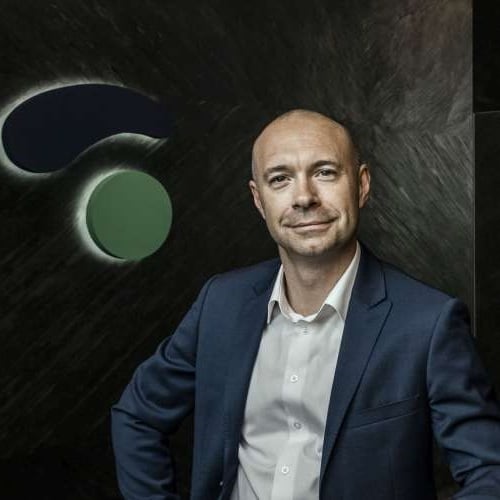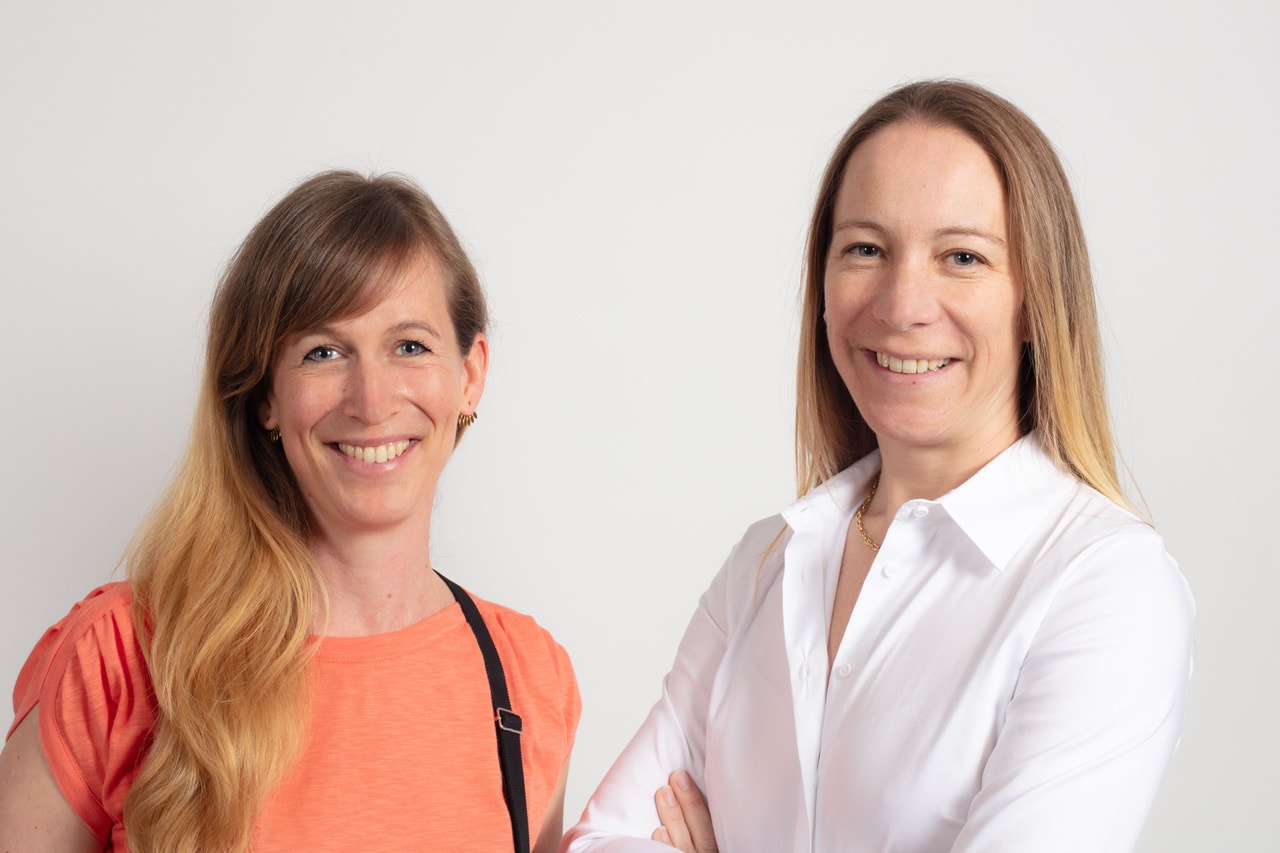{{item.title}}
{{item.text}}

{{item.text}}
The PwC Retail Platform contains unique content, created by experts at PwC and Strategy&, on broadly understood business transformation in the context of the latest market trends and the changing environment.
In recognising the need for a comprehensive approach to business matters, the materials present each issue from three different perspectives: that of the consumer, the organisation and operations, and the regulations. The aim of our platform is to provide people on the FMCG market and in retail with valuable information that will help them in their day-to-day work.
The topic of the fifteenth episode is the market of alcoholic beverages. PwC experts present challenges facing the industry in the current socio-economic situation, prospects for the development of consumer trends and the meanders of excise regulations that regulate the market. We will find out what research and development incentives can be counted on by producers of the spirit industry, as well as what problems in the area of packaging have recently appeared on the market.
We would like to achieve the right balance between e-commerce and offline trading, which is becoming increasingly digitized. We will continue to develop our unique omnichannel model, in which offline will overlap with online transactions. Traditional CCC shops are increasingly becoming sources for acquiring e-commerce customers. We are continuing the digitization process: approx. 200 locations have been equipped with tablets for online purchases – currently already 15% of ccc.eu turnover in Poland is tablet-sourced. Further development of this solution is planned in both Poland and abroad. Our shop staff plays a major role here. Even the best of technologies, when not supported by human beings, will not function as effectively as with the participation of employees – who are CCC’s advisors and ambassadors – and also the requisite tools. Self-serve checkouts and internet kiosks are also being prepared. We are also testing e-commerce shipments from shops with the intention of making this solution fully functional at the turn of Q1/Q2 2021. All this shows a real change in customer behaviour and the importance of introducing digital solutions in traditional shops. We would also like to take this opportunity to invite everyone to eobuwie.pl shops – we already have nearly 30 such shops located throughout Poland, and to the new Modivo shop, which is an excellent example of the overlapping of the sales models. All this proves that traditional shops will continue to exist, but that their role will change.
Currently, consumers are looking for various forms of shopping, and e-commerce is providing more and more solutions. What customers appreciate on our platform is not only the possibility of buying groceries online and having them delivered to their homes, but above all choosing the shop in which the purchases are made. The fact that we are amalgamating the largest chain stores is of great importance.
However, what is most appreciated is the possibility of contacting the person who completes the order. If the product selected by the customer is unavailable, he/she has the option of buying a replacement product, and if so, which one, or to resign from purchasing the unavailable item. Therefore the customer can actively select products and knows exactly what products will be delivered. The whole procedure is contactless and cashless, which is especially important during the pandemic as it contributes to everyone’s health and safety.
Our platform is also a modern communication channel for brands. Customers can be informed about promotions as well as new products and non-standard promotions by a given brand. Each purchase decision is saved in a memory, which translates into access to behavioural analytics and the effectiveness of advertising and promotional activities. Giants such as Żywiec Zdrój, Pepsico and Kompania Piwowarska have already placed their trust in us, and several other brands are currently testing the platform’s capabilities.
Everli also provides an additional distribution channel for shop owners, and all this without the need to build an expensive technological and logistics infrastructure. The same advertising and promotional activities can be conducted both in traditional and online shops. Our partners can sell their products in 17 Polish cities, and this allows for quick scaling of the business in the e-commerce channel. During the past few months we have noted a larger number of new registrations than in the three prior years of operations, and the average increase in the number of customers was nearly 1000%.
Thinking of continuous development, in the foreseeable future we are planning international expansion. For many years we have been successfully present in Italy where we cooperate with approx. 30 commercial chains and are constantly acquiring new partners. However, this is only the beginning of our foreign expansion, as e-commerce is gaining strength.
E-commerce is the fastest growing sales channel which nowadays requires a somewhat broader perspective. It is not only e-commerce, but is increasingly also m-commerce – by observing consumer behaviour, in particular that of young people, we can see that an increased number of transactions are being conducted using mobile phones and tablets. This channel for reaching people certainly has great potential. Product positioning is key in m-commerce and it is becoming one of the most important challenges for sellers. Because mobile phone and tablet screens are smaller, and have limited records, it is becoming more and more difficult to position oneself on the first or second page in the search engine. It is also important to properly present products on the internet. A good description of the product, good quality photographs taken from various angles and the use of key words, translate into drumming up interest in a concrete group of customers who are looking for a specific item. Consumers’ growing awareness means they are looking for more and more detailed information that will allow them to decide which products will meet their expectations.
In reality it is the omnichannel approach – which integrates all sales channels both offline and online – that we are all striving to achieve, and it is also the future of trading. It is also becoming crucial to maintain a relationship with consumers in order to be able to best respond to their needs. This is all the more important in view of the pandemic which has changed our purchasing behaviour. The most visible changes were caused by restrictions and concerns related to our safety and also to the availability of goods. At the very start of the first wave, there was a great deal of interest in selected product groups, including also from the Petcare area. The consumer basket value was higher with fewer visits to shops.
During the lockdown we also observed that more people decided to adopt a dog or a cat. There are hundreds of studies that describe the benefits we can experience from having pets in our homes. A better sense of well-being, coping with stress more easily, greater self-confidence, less likelihood of being overweight and, ultimately, better cardiovascular health. Therefore, in addition to the obvious impact on our mental and emotional health and physical well-being, having pets is also a pretext for taking a walk, which is of great importance to maintaining a good work-life balance.
We are observing a rapid development in both production technology and digital technology. There are many reasons for this phenomenon, but the leading ones are the economic ones. There is some kind of positive feedback at work here: technological development improves business efficiency which, by calculating the result, invests more boldly in developing subsequent projects.
This change can be seen in many business areas, from the supply chain to customer relationships. The more a business is based on production or on services in the digital world, the more it can benefit from the development of technology. In the case of production processes, change is most often associated with the automation of processes, whereas with regards to digital services, it is associated, among other things, with digital transformation based on a data-driven strategy or the use of artificial intelligence – all this to meet customer needs as efficiently as possible.
Looking at these changes, a second self-propelling mechanism can be seen; the more automated or digital processes there are, the more data is generated and, consequently, the greater the chances of developing advanced analytics which will improve, in the next step, the further automation process, but also more effective business decisions. In turn, well-developed analytics drives progress even further.
So, we have the second powerful driving force behind the technological revolution we are observing. The first one was economic, whereas the second one is more substantive. The reasons for progress are, of course, far more numerous, but it seems that the aforementioned outline already shows that we are surrounded by real change with a global reach, which requires a decisive, targeted and prompt action in the business world. Read more
The pandemic has significantly accelerated changes being made in the retail sector, which now needs to follow the changes in customer behaviour even more closely than before. These changes can be observed in online communications and, even more importantly, in the customer service and purchasing system. Our experience clearly shows that biometric solutions are indispensable for the convenience and security of both the customer and the merchant. This trend is already visible when opening bank accounts with a selfie or accepting agreements. Pay by eye is already available as a pilot project, and this is just the beginning.
According to the latest report by the VISA payment organization, as many as 62% of Polish consumers are willing to use biometric authentication instead of passwords when shopping. Seventy-three percent believe that such solutions are faster and more convenient in their present use. We are successfully testing them in practice, because moving away from the use of cash facilitates the development of our biometric payment system. During the pandemic, namely in late June 2020, PayEye implemented the first eye payment in the world, based on iris recognition. Not having a payment, a low battery in your telephone or no cash in your pocket are no longer a problem.
Therefore, biometrics is the natural direction to take in the retail sector for a number of reasons. The pandemic has made customers look for a convenient and secure payment system. Merchants have similar expectations, if only to ensure that the sanitary regime is being observed. They do not want to expose their own staff or customers to unnecessary contact. Furthermore, these solutions save time, because they can speed up the entire transaction process. Biometric payment at the cash register is much faster than payments by card or cash, which in practice take more time than just the moment of using the card or handing over cash. Customers almost always have to look for their card, phone or cash in their pockets or handbags. Thanks to PayEye, we do not have to look for anything, just approach and pay by eye. Both the customer and the checkout operators save a lot of valuable minutes, which is of particular importance when cash registers are understaffed.
Biometrics also has the advantage that it supports strong user authentication. It is already evident that such solutions have a much broader use than just making payments – they can be used in daily life as a form of access to premises or warehouses, for the confirmation of agreements and decisions or for identifying people. The global research agency ‘Markets And Markets’ estimates that revenues from the global biometric technology market will grow from the current USD 36.6 billion to almost USD 69 billion in 2025. This market is still under construction, but it is growing at a tremendous pace. Whoever overlooks this trend, will be doing their competitors a favour.
The times when talking about implementing AI solutions in business sufficed are long gone. Given the fast growth of e-commerce during the pandemic, such solutions have rapidly moved from the “nice to have” to the “must have” category. Those retailers that have quickly adapted to this new post-Covid reality and are already implementing AI-based solutions can still gain a competitive advantage. However, the most important benefit is that they will increase their chances of effectively competing with companies such as Amazon and Zalando, which already implemented innovative AI technologies a few years ago and are now in a position to increase their competitive advantage over companies that have not invested enough in this area. In the report “Humans + bots: Tension and opportunity” MIT describes “How top global brands blend human skills and AI to build customer intimacy and drive growth” which confirms that the benefits of deploying assistants in retail are already significant. “Juniper estimates that by 2023, chatbots deployed in the retail sector globally will save the industry $11.5 billion in costs, and generate over $112 billion in sales revenue.”
The mission of Yosh.AI is to strengthen the position of retailers by providing state-of-the-art AI solutions in conversational commerce as well as image recognition. These two areas of artificial intelligence are revolutionizing online shopping, by ensuring not only a more enjoyable customer experience, but also higher conversion rates for retailers. The efficiency and returns on investments in these solutions are continuously confirmed by Yosh.AI customers, as evidenced by their increasing implementation throughout the world. Read more
Last year, accelerated digital transformation and the strong entry of businesses of all sizes into e-commerce, forced by the pandemic, were regular topics of our discussions. Many companies were virtually “catapulted” 5 years into the future. This applies both to the sales process, advertising as well as communication between employees, or with customers.
This is due to changes in consumer behaviour. Since the beginning of the pandemic consumers have been spending much more time in the Internet. This can be seen, for example, in Facebook statistics. At the peak of the pandemic, the amount of information sent through our messaging apps increased by more than 50 per cent. Read more
The year 2020 posed a number of challenges for the retail industry in connection with the COVID-19 pandemic. Retailers had to cope with operating restrictions (among other things: limits on the number of customers allowed in stores at the same time, special shopping hours for the elderly) and a temporary lockdown imposed on shopping centres and hardware stores.
Out of concern for the health of employees and consumers, retail chains implemented maximum safety measures in their outlets, which made it necessary to incur additional costs of PLN 400 million and changes in the organization of the working system in stores and distribution centres. The retail sector made every effort – in these unusually difficult conditions – to maintain the continuity of the supply chain, thereby ensuring the provision of food and essentials to millions of Polish families. The traditional trade demonstrated high flexibility in adapting to the new consumer buying habits. Read more
In 2020, despite the difficulties caused by the pandemic, we decided to review our operations and prepare an action plan until 2025. One of the elements of the work on strategy was to analyse the factors which distinguish us from other national and european operators. We found the most important discovery right in front of our eyes. We noticed that there are two large operators on the Polish market, one positioning itself as a “cost leader” and the other as a ”product leader” in terms of comprehensiveness and quality, which created the potential for us to develop as a “tailored service leader”.
At the same time, as part of our internal review, we found that the diverse customer requirements we meet (so far viewed as somewhat a nuisance) could be the source of our competitive advantage. Until now, we have followed the popular assumption that logistics inherently prefers standardization. However, in the process of building our strategy, we discovered that our core advantage is the ability to reconcile the different needs and interests (industries, temperatures, requirements, locations, flows) of clients, which on a certain scale, if well managed, can complement and balance each other out. Read more
The future in logistics lies in becoming environmentally-friendly and responding to customer needs immediately. This requires a continuous analysis of customer paths and coming to conclusions fast. Therefore, modern logistics cannot exist without the strong support of data analytics and tried and tested process automation tools.
The challenge today is to make logistic solutions as environmentally-friendly as possible. Our network of Parcel Lockers continues this trend. We have been able reduce harmful emissions in urban areas by 60 percent, and in rural areas by as much as 90 percent compared to traditional courier services. Of course, there is still the issue of the customer collecting the parcel without generating additional traffic. Read more
Dedicated parcel services for BHU (Big Heavy Ugly) parcels are gaining importance. Their emergence is driven by the rapid growth in e-commerce and the increasing fragmentation of business-to-business flows as a result of companies adopting small batch production approaches.
BHU are in essence non-standard parcels.
Big – when they exceed standard dimensions defined for courier parcels.
Heavy – when their weight exceeds the regulatory standard of 31.5 kg (in Poland).
Ugly – when due to their shape or contents, such parcels would hamper sorting processes, which makes them impossible to handle in highly automated courier processes. These include liquids, which have the unfortunate potential of causing stoppages in the sorting process in case of leakages. Beyond ordinary liquids, such parcels also include containers with so-called ADR LQ, i.e. small quantities of hazardous substances. The BHU definition also covers, e.g. industrial alcohols and alcoholic drinks alongside unusually shaped parcels.
Traditional courier companies usually specialize in handling parcels of standard shapes and weights, so integrated sorters and sorting tables are designed to handle such standard packages. However packages with, for example, protruding elements or atypical shapes can make the standard sorting process difficult and hence, these parcels also fall into the “uglies” category. Read more
ESG is defining a new approach to business. Corporate responsibility in environmental, social and corporate governance is becoming of key importance for consumers, investors and employees. This is a challenge for companies and for us all – an opportunity to build a solid foundation for sustainable development.
Gone are the days when the only measure of a company’s effectiveness was the profit it earned. Today the key issues are how, at what cost and with what added value will this profit be achieved. The spectre of an ecological catastrophe and social changes that redefine relationships between companies and their customers cause a fundamental change in the approach to economic development. Sustainable development, or responsible management of the ESG aspects of our business, is both a necessity and a duty that can no longer be postponed until later. Read more
According to a recently published report by Morningstar, an international research agency, as at the end of the previous year the value of assets invested in ESG funds globally totalled USD 40.5 trillion. However, the events that took place in Europe in the first quarter of the current year were a turning point. The value of assets invested in ESG ETFs reached USD 25.8 billion and exceeded the value of investments in other types of ETFs, which amounted to USD 22.3 billion. Read more
In recent years companies’ awareness and activity in the field of sustainable growth has been increasing. This trend has not even been hampered by the COVID-19 pandemic. Paradoxically – the extremely negative experiences have strengthened the interest of entities in this topic.
The COVID-19 pandemic changed many aspects of life. It might seem that the last year was not conducive to thinking about the pursuit of long-term strategies or designing the future. It could also seem that companies focused on immediate problems, maintaining liquidity, fighting for every job or even for survival on the market, would lose interest in achieving sustainable development goals (SDGs). Nothing could be further from the truth. Read more
The idea of putting people and their needs at the centre has guided Żabka’s strategy for over 20 years and is reflected in the mission, vision and values of our organization. That is why at Żabka we are proud not only of our financial results and the expansion of our network. Żabka is first and foremost the people who create it: our employees, co-workers and franchisees. We combine the pursuit of our strategic priorities with taking responsibility for what is important to us and our key stakeholders. In line with our strategy pillars, we focus on sustainable lifestyles, making a positive impact on our surroundings, being responsible for our organization and, ultimately, on everything related to the place where we and future generations will live – a green planet. Serving approximately 2.5 million customers every day, working with nearly 6,000 franchisees and several thousand employees, we have the power as well as the responsibility to change the world for the better with our daily decisions – to create value by simplifying people’s lives. Read more
Post-Covid, customer retention is more important than ever. As a brand, you can launch your own loyalty program to engage your customers, or formulate an alliance with other brands and launch a coalition program.
Also called “shared loyalty programs”, coalition loyalty is a concept in which many unrelated brands join together in a partnership. Customers can enjoy more freedom and a wider range of incentives, as they earn points at all participating brands, and then redeem said points at a different (albeit still involved) brand.
Coalition loyalty programs are created by a single company, and then extended to a number of participants. The owner of the program is responsible for managing the program and overseeing the clearing and settlement process. Participating brands still enjoy a level of freedom, benefiting from increased footfall and the data collected through the program. Read more
After those extremely turbulent months we are recovering and as IKEA we might say we grew stronger. In the reality that happened to all of us, we took care of our co-workers, communities and pivoted the way we operated the business to became 100% online seller. At the same moment, in August 2020 IKEA Family has also great achievement – our club reached 150 million members worldwide. As home became the most important place, we see it as a great opportunity to inspire our customers even more.
IKEA FAMILY is a goldmine for IKEA. In our case hoverer, the gold means humans, direct relations with our customers and access to the data they decide to share with us (it is very important for us that we value privacy of our customers and let them easily control privacy settings).
As more and more customers join our club, we also have many challenges along the way. For many years we have been focusing on physical stores. So establishing single view on customer in omni reality was a big change for us. Now we are moving from store penetration to Poland penetration. Read more
Businesses that do what they have always done are destined to plateau. Successful companies are constantly evolving and transforming their business models and People are at the very heart of this evolution.
Equal pay for equal work is a fundamental step for the modern business and an essential enabler for transformation. How can employees be engaged, committed, and innovative knowing (or believing) they are not paid the same for the same work?
Companies that address the gender pay gap build trust with employees, increase diversity of skills, improve attractiveness to prospective talent, help shape an inclusive and diverse culture, and ultimately improve their bottom-line results. Read more.
We are a company with more than 70 000 employees in stores, distribution centers and offices all over Poland. Covid-19 pandemic was a crisis that fell unexpectedly on everyone and has been a reason for great anxiety over one’s personal safety, financial stability as well as feeling of uncertainty regarding the future.
As a responsible employer we always feel great commitment towards the whole Biedronka team. Therefore, in the time of crisis, we have primarily focused on: guaranteeing personal and family safety to our employees, securing their financial stability and recognizing their continuous effort through the pandemic. Communication was one of our greatest challenges as we needed to instantly adopt new tools and channels while modifying our communication flow according to the constantly changing pandemic situation and state regulations in an ambiguous environment. We assumed proximity as our communication pillar – being close to our employees, listening to them and being responsive to their needs and fears.
Moreover, as an essential business we always go to all lengths to take all actions in line with our social mission – guaranteeing Polish consumers incessant access to indispensable products. Thus, our focus during the pandemic was also to fulfill our mission at all times to ensure the sense of stability to Polish society as well as reinforce the understanding of this important mission among our employees and recognize their essential social role.
Read more.
Currently, almost 1000 people cooperate with Żabka Polska on the basis of other forms of employment than FTE, such as an agreement or contract. They serve as partners and managers in the following areas: adaptation, expansion, sales, auditing, training and development. Due to the organic development of the Żabka chain - assuming the launch of at least 1000 new stores this year - the company is constantly looking for co-workers in each of these areas. Therefore, it decided to build the so-called Journey Map, a set of rules and standards for the subsequent stages of the cooperation process.
In each of the stages of this process - from building the company's image, through recruitment, implementation, development paths of co-workers, training, salaries and benefits, to the termination of cooperation - it created new standards, as well as differentiators, so that its offer is unique in the Polish market.
As part of the implementation of the project, Żabka established a broad project group composed of representatives of the company's departments, a group of co-workers and external consultants. Such composition of the team combined the organization's know-how with market expertise. Read more.
The COVID-19 pandemic, the accompanying restrictions and disruptions to normal economic activity led to a temporary crisis for many branches of the Polish industry. Last year was also a challenging time for the entire food industry - including the convenience sector. A category that has grown like no other in recent years, only to disappear almost completely during the global pandemic crisis. Now it is coming back, and in style. Read more.
Empik is the undisputed leader in omnichannel sales in Poland - for years it has based its strategy on the dynamic development of online and mobile channels and the simultaneous expansion of its retail chain. One in three Poles already buys at Empik, 60% of our customers are omnichannel clients, and this share is constantly growing. In turn, every 4th consumer who used to shop only in brick-and-mortar stores now does so also online. Read more.
The COVID-19 pandemic, the accompanying restrictions and disruptions to normal economic activity led to a temporary crisis for many branches of the Polish industry. Last year was also a challenging time for the entire food industry - including the convenience sector. A category that has grown like no other in recent years, only to disappear almost completely during the global pandemic crisis. Now it is coming back, and in style. Read more.
Demand for e-purchases generates supply in e-commerce, and with the development of sales in online channels, the number of processes accompanying the development of e-commerce is also growing. The commercial sector in the delivery market area is therefore moving towards maximum optimisation of these processes, simplifying them and adapting to the needs of today's e-consumer. In my opinion, the first key trend is the growing importance of automation. More and more companies decide to sell through several online sales channels. Effective operation in the omnichannel model requires the integration of multiple e-commerce systems and tools. Companies that are ready for such a transformation or have already made it are in a more favourable position than their more "analogue" competitors. Read more.
The cost situation in the retail sector has recently become more complicated. Unfortunately, logistics has no control over rising market costs and has to adapt to changes. It is difficult to win new contracts as they are risky and carriers discount this risk by creating margin buffer. A good situation is when the transport customer already knows a certain group of transport providers and logistics operators, as this allows them to assess the risks and the need to take them into account in contract terms. Costs will rise, but it is difficult to say exactly at what rate. Most market participants expect a level above 10%. We can certainly expect requests for indexation from operators and carriers. Read more.
All market players are seeing an increase in the cost of doing business. This includes the retail sector, which often uses various types of transport and distant sources of supply, e.g. Asia. In the area of maritime transport, the biggest spike in costs is behind us. We are currently observing stabilisation with minimal downward fluctuations. It is difficult to forecast anything, but at the moment we do not expect any significant upward or downward movements. Over the next year, we anticipate maintaining the prices level in this segment. Rail and long-haul air transport prices are strongly linked to sea transport. Read more
When creating everything that is new, apart from the vision and strategic sense, it is necessary to create the right product that will meet the customer's expectations. In addition, business models in many industries have changed significantly over the past few years, introducing volatility into their business. This volatility and its skilful management have become a competitive advantage that in many cases allows you to run a profitable business. This is due to the fact that volatility is attractive to a customer who often reaches for a new product because it has changed, thus differentiating it from competitors' products. In many cases, innovations revolutionize the competitive position, becoming the engine of growth in the form of increasing income and business efficiency. Moreover, the introduction of changes in products results from the availability of raw materials, nutritional trends, and eco-awareness of consumers. Each planned change of a product requires a careful assessment of the feasibility of the change in the context of product quality and its life cycle (in some industries legally regulated) as well as an assessment of the likelihood of success. That is why many companies spend exorbitant amounts on R&D and treat R&D as an important area of their activity. Read more.
One thing can certainly be said about the year 2021 - it was happening! There was no shortage of challenges, of course, but customers' interest in online shopping was growing, which made the e-commerce segment thrive. From the perspective of the Allegro platform itself, it was also a very successful year, especially in terms of developing improvements for buyers. Read more.
Adjustments can be difficult, especially those that need to be implemented within a short period of time and are due to many variables. To prepare for them, it is worth acting as early as possible. COVID-19 has taught us to be ready for change, both in operational or sales processes and in the purchasing decisions of customers who have increasingly started to take advantage of on-line shopping opportunities. Read more.
We have to remember that Displate is a somewhat different company than the rest when looking at key trends. We are strictly an e-commerce company, operating across 60 markets and selling mainly to the US and Western Europe. We work in a D2C model and handle complex orders, from production to after-sales customer support. Meanwhile, most companies focus only on a particular part of the process, one or two stages at most. Read more.
The non-alcoholic beverages market maintains a value of ca. PLN 17bn at retail prices, despite rapid turbulence related to the pandemic and legislative changes in 2021. The three largest categories are invariably bottled water, carbonated drinks and juices and fruit drinks (including smoothies). Read more.
The beverage industry has undergone a real revolution in the last few months. Shop shelves look very different than they did at the end of 2020, both in terms of products and prices. Of course, the main reason for these changes is the sugar levy, which has significantly influenced the prices of sweetened beverages - especially carbonated ones - and thus forced modifications to consumer trends. Read more.
In addition to traditional recipes, the industry also has room for completely new concepts and product innovations. The key trends in the beverage business are primarily products with reduced sugar content and lower calories. We already have such products in our offer. It is worth mentioning the Kubuś brand, for which for years we have been introducing all new products without added sugar. An increasingly noticeable trend is production based on natural and plant-based ingredients, which are perceived as healthier and more innovative. Third are products that combine different categories, such as juice plus water or drink plus tea. Drinks with plant extracts are also on the horizon. Read more.
British American Tobacco – a company with 120 years of history - has been running operations mostly in the B2B trade space. The rise of new product categories along with digital consumer revolution in recent years has created the opportunity for marketing teams to build direct relations with BAT products consumers supported by extensive use of digital technologies. These engagements are taking place in both digital and physical space, providing experiences for consumers in social interactions, delivering content, running e-commerce operations, providing consumer support, as well as operating digitalized physical retail activities. Read more.
The acceleration which started in e-commerce during the pandemic is a long-term phenomenon. 81% of global consumers say their shopping habits have been changed in that time. 92% of them believe that these changes will stay with them for a long time. Online shopping has become the standard, simplifying the process of acquiring goods and services and making delivery more reliable. Read more.
Rapid development of e-commerce has, on the one hand, led to an increase of sales in the online channel, but also presented the industry with a number of challenges.
One of the key areas is time and quality of service. The easing of pandemic restrictions made the customers see once again the alternative for shopping in stationary shops, and expect 'here and now' results from e-commerce. It is important to be aware that users require a smooth shop’s operations with system response times adapted to the performed activity, immediate order delivery and response from customer service, as well as unproblematic returns. Read more.
The Digital Markets Act (DMA), is a new EU regulation that aims to improve competitive conditions in digital markets and allow new players to enter the market. In principle, the DMA is aimed at the largest companies in the technology sector. But, as we shall see, in practice it will affect a significant proportion of entrepreneurs active in the digital sphere. Read more.
The beer market has undergone a major transformation in recent years. This is linked to changing consumer expectations, a shift in the structure of trade in Poland towards modern formats and the macroeconomic and regulatory environment. Firstly, consumers expect an increasingly wide range and variety of flavours. The fastest growing segments include flavoured beers and non-alcoholic beers, which results from a more active and health-oriented lifestyle. Grupa Żywiec was the first to recognise the potential of 0.0.% beers and in 2018 launched a wide range of products under as many as 3 brands and the Zero Zone umbrella. Today, this segment already accounts for more than 6% of the market value and continues to grow dynamically. Read more.
Let's start with the ugly 'c' word to get it over with. Coronavirus. It would be a truism to write that the global pandemic has drastically affected craft breweries, as there is arguably no industry on which it has not left its mark. Before 2020, producers of kraft beer (in Poland, "craft" is spelled with a "k" and not, as intuition would have it, with a "c"; it's just domestic folklore) were living like in a clover. Read more.
{{item.text}}

{{item.text}}








































